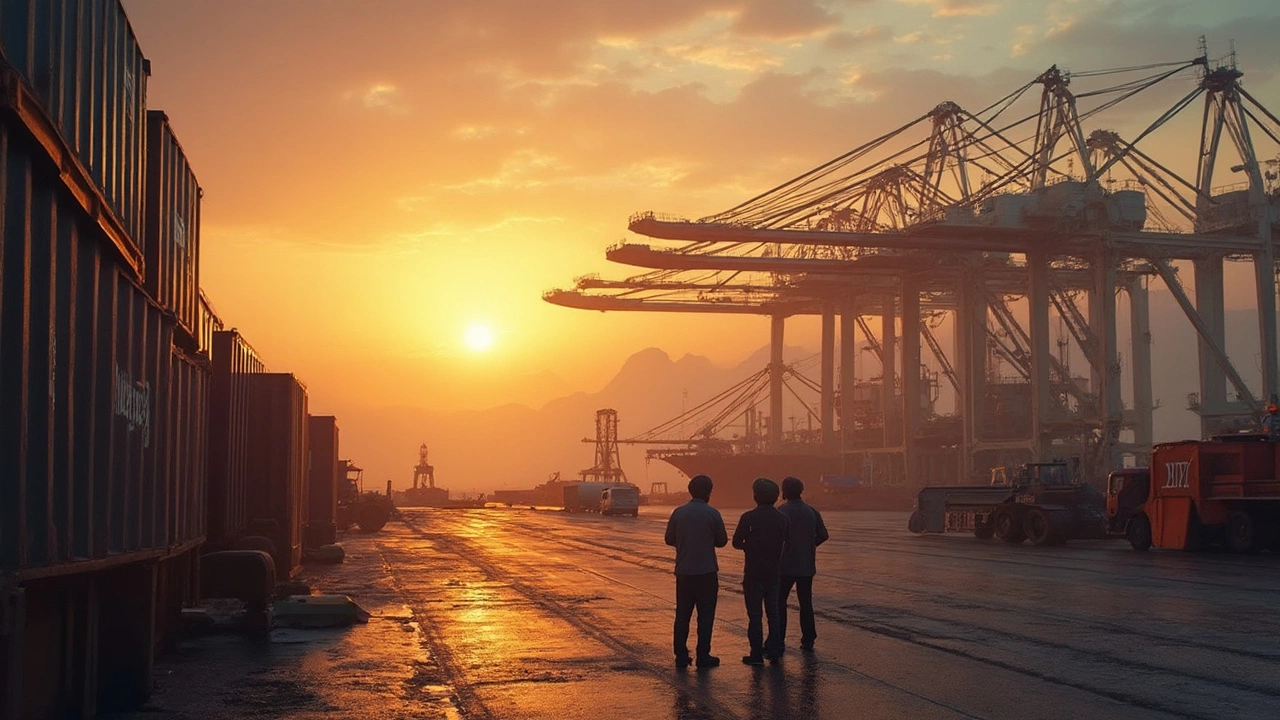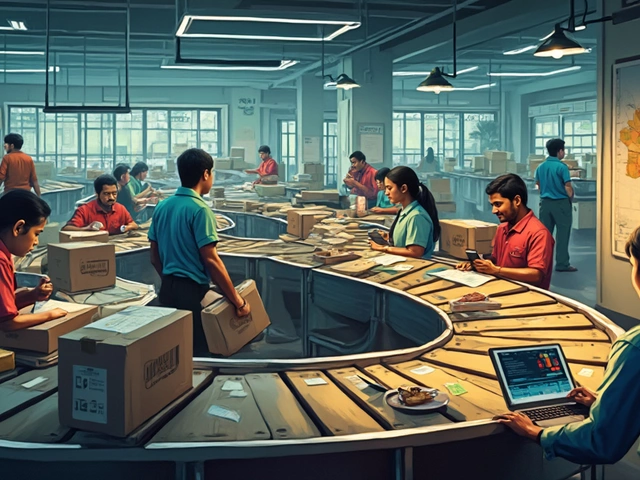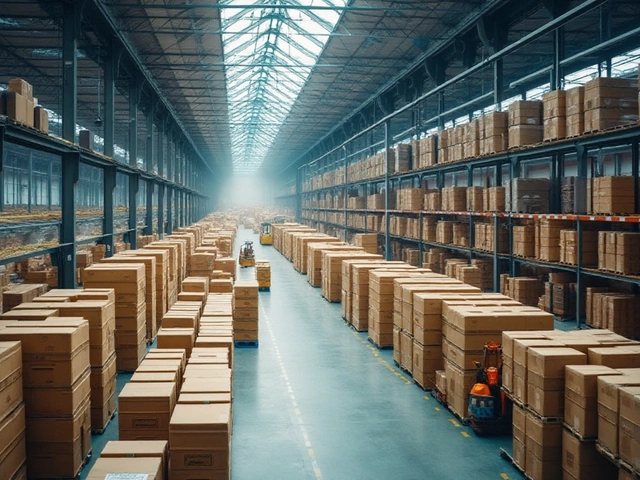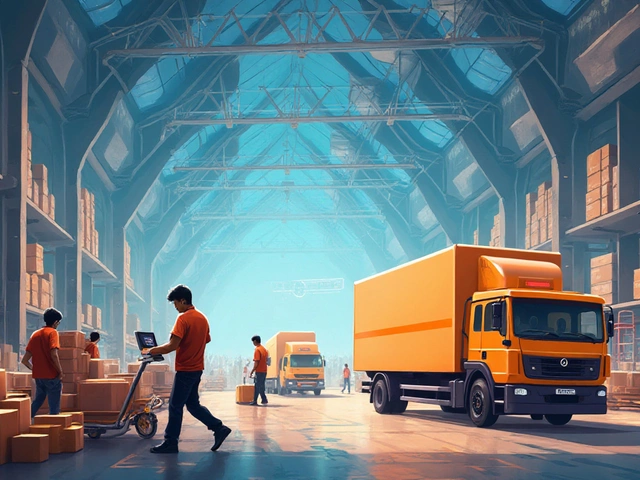Ever wondered what freight forwarding actually involves? It’s not just calling a truck and hoping your cargo shows up on the other side of the world. Freight forwarders do a ton of work that customers rarely see, but every box, pallet, or container goes through their hands—or at least their emails—before moving an inch.
If you’ve felt lost figuring out who’s booking shipments, handling customs, or making sure all the paperwork actually matches your cargo, you’re not alone. The real magic of freight forwarding is how it lines up dozens of moving pieces so your products don’t disappear into a black hole. Mess up one thing, and suddenly your shipment’s stuck in customs or stranded at a random port.
So what do these folks really do? Think of them as multitaskers who wear more hats than you’d guess—from paperwork junkies to insurance advisors—all while making sure your cargo keeps moving. Want to avoid nasty surprises like delays, fees, and lost goods? Knowing these basic activities pays off way more than scrolling through shipping memes.
- What Exactly Is Freight Forwarding?
- Booking Shipments and Logistics Planning
- Paperwork and Documentation: The Real Grind
- Customs Clearance and Compliance
- Cargo Insurance and Risk Management
- Tracking, Storage, and Delivery
What Exactly Is Freight Forwarding?
If you picture freight forwarding as just booking a truck or ship, you’re missing most of the story. It’s a whole service industry built around moving stuff from point A to point B—smoothly, legally, and as fast as possible. Freight forwarders are like travel agents, but for your cargo. They pick the best routes, handle annoying paperwork, and sort out the mess when things go wrong.
Here’s the deal: freight forwarders don’t actually own the ships, planes, or trucks. Instead, they play middleman between you and every part of the supply chain—carriers, customs, and warehouses. Their big advantage? They know the logistics world inside out, so they can often find options that save time or money that you’d probably miss.
According to the International Federation of Freight Forwarders Associations (FIATA):
"A freight forwarder organizes shipments for individuals or companies and arranges the whole process, taking care of all the logistics, documentation, and compliance with regulations."
What does all that mean in real life? They stick their heads into every detail of a shipment:
- Planning the most reliable and cost-effective transport plan
- Coordinating with airlines, shipping lines, and trucking firms
- Managing customs requirements and laws
- Prepping all the documentation the journey needs
- Keeping you in the loop with tracking and status updates
Need a real-world example? Imagine you’re shipping phone cases from Shenzhen, China to Birmingham, UK. The freight forwarder will figure out if sea or air is the smarter option, book container space with a solid track record, and fill out all those customs forms (so you avoid fines or hold-ups). When your goods land, they’ll get them through customs and hand them off to a delivery partner for the final mile.
And just to show how much is riding on this industry, take a look at this:
| Year | Global Freight Forwarding Market Size (USD billions) |
|---|---|
| 2019 | 148.3 |
| 2023 | 210.0 |
That’s a huge jump—and it keeps growing as more businesses realize they don’t want to manage this chaos alone. When you're dealing with freight forwarding, you’re basically buying peace of mind, not just a delivery slot.
Booking Shipments and Logistics Planning
The real action in freight forwarding starts with locking in the space you need and choosing the right way to ship. This isn’t just about picking the cheapest rate—there’s strategy behind every move. Freight forwarders juggle bookings with airlines, ocean carriers, and trucking companies, looking for the best fit for your timeline, cargo type, and budget.
Whenever a shipment comes in, a forwarder checks all the details: package size, weight, special handling, and deadlines. For example, some goods need climate control, others are oversized and need special permits, and high-value items might need extra security.
- Route planning: Forwarders decide the best way from warehouse to destination, which can involve different ports, airports, or border crossings.
- Carrier selection: Not all carriers are created equal. Good freight forwarders use networks they trust to cut down damage, delay, or lost cargo risk.
- Space booking: Booking is competitive—especially before major holidays or during shipping crunches—so getting a spot early matters a lot.
- Schedule coordination: They sync up trucking pickups, ship departures, and customs office hours, so nothing falls through the cracks.
Did you know that around 80% of world trade by volume moves by sea? That means managing vessel bookings is a daily grind for most forwarders. Miss a slot, and your shipment could sit at the port for weeks.
A solid logistics plan also needs backup options, because delays and sudden changes happen all the time. If your shipment’s stuck due to a storm, a forwarder can often find a reroute fast by pulling strings with alternate carriers.
The best tip: Always ask for a schedule with estimated pickup and delivery dates. Clear communication saves a ton of headaches later, especially if you’re dealing with tight deadlines or high-value shipments.
Paperwork and Documentation: The Real Grind
This is where most people trip up—paperwork. The freight forwarding world is all about forms, stamps, and signatures. Every shipment needs the right documents, or you risk delays and extra costs. There’s no shortcut here; the right paperwork makes or breaks your shipment.
Here are some of the must-have documents for any international shipping job:
- Bill of Lading: This is like the birth certificate for your cargo. It details what you’re sending, where it’s going, and who owns it along the way.
- Commercial Invoice: It lists the value, type, and quantity of goods. Customs officers love this one, because it helps them check what’s inside.
- Packing List: Think of this as the itemized receipt. It breaks down everything inside each box or pallet, so handlers know what they’re dealing with.
- Certificate of Origin: Some countries want proof of where a product was made. No certificate means your goods could get stuck.
- Import/Export Permits: Certain products need government approval to leave or enter a country. That’s especially true for chemicals, food, or electronics.
Messing up just one of these can cause your goods to sit in a warehouse—or worse, rack up storage fees. A 2023 report from Kuehne+Nagel showed 37% of delayed shipments in Asia were due to missing or incorrect paperwork. That’s a ton of wasted money just because of skipped steps.
| Document | Why It Matters |
|---|---|
| Bill of Lading | Proof of shipment, title document |
| Commercial Invoice | Customs clearance, value declaration |
| Packing List | Check for contents, helps with insurance |
| Certificate of Origin | Proves manufacturing country |
| Import/Export Permits | Required for restricted goods |
Tip: Never hand off your cargo until you double-check your paperwork—or work with a freight forwarding agent who actually knows the rules for your destinations. Paperwork isn’t exciting, but it keeps your shipment moving.

Customs Clearance and Compliance
This is where the freight forwarding process can get a bit tense. Clearing customs isn’t just about handing over a box and hoping customs lets it through. There’s paperwork, rules, inspections, and a bunch of acronyms nobody warns you about. But if you get it right, your shipment breezes through—get it wrong, and it could sit for days or even weeks, costing you big time.
Freight forwarding experts handle customs paperwork every single day. They know which forms your shipment needs, which countries are strict, and when a small mistake can lead to a shipment being flagged for extra inspection. Some common documents involved include:
- Commercial invoice
- Packing list
- Bill of lading (ocean or air)
- Certificate of origin
- Import/export licenses (when needed)
- Customs declaration forms
If you’re shipping internationally, it’s up to the freight forwarder to make sure these forms are filled out accurately and submitted on time. Each country’s customs officials want to make sure nothing illegal or dangerous is coming in—and they want those duties and taxes paid, too. The wrong or missing document can send your goods straight to a customs warehouse (where storage fees kick in fast).
Compliance is the other big side of the coin. It’s not just about paperwork; it’s following local laws, trade restrictions, and making sure you’re not on the hook for banned or restricted items. For example, the European Union rejects over 2,000 containers a year because of paperwork or compliance issues—that’s a lot of lost time and money if you’re not careful.
Here’s how a smart freight forwarding partner keeps you out of trouble:
- They double-check item codes against customs classifications.
- They watch for changing regulations, especially for high-risk categories like electronics or food.
- They organize pre-clearance when possible, saving days at congested ports.
The right forwarder can even pre-calculate duties and taxes so you’re not surprised by extra costs at the last minute. If you don’t want your shipment stuck for silly reasons, or worse, seized entirely, customs and compliance needs real attention—not just a rushed signature at the end of a long day.
| Common Customs Delays | How to Avoid |
|---|---|
| Missing paperwork | Have your forwarder check documents early |
| Incorrect item codes | Verify product classifications |
| New trade restrictions | Stay updated, especially for certain regions |
| Unpaid duties/taxes | Calculate and pay in advance |
Pays to remember: “Smooth customs” is never accident. It’s the result of experience, clean documentation, and a forwarder who knows their stuff.
Cargo Insurance and Risk Management
So much can go wrong when you’re moving goods across borders. This is where freight forwarding pros step in with cargo insurance and risk management. Accidents, theft, bad weather—honestly, the list is longer than you’d expect. But get this: over $50 billion worth of goods are lost or stolen every year during shipping, and insurance helps you avoid eating the cost if something goes sideways.
Cargo insurance isn’t one-size-fits-all. Depending on your load, route, and value, there are different types. The big ones are:
- All-risk insurance: Covers just about everything unless it’s specifically excluded (like war or nuclear risks—yeah, that’s a thing).
- Total loss only: You’re only covered if your whole shipment is lost or destroyed, not if just a few boxes go missing.
- Named perils insurance: Only covers the stuff listed in the policy, maybe just fire, collision, or sinking. Read this one extra carefully.
If you’re shipping electronics, clothing, or high-value goods, you’re a target for theft or damage. Freight forwarders usually suggest getting all-risk insurance for peace of mind, especially if your stuff is fragile or easily resold on a shady market.
Now, insurance is only step one. Real risk management is all about planning. Forwarders will check the reputation of carriers they use, double-check packaging, and pick routes and schedules that cut down risk. They’re also big on clear, solid documentation—if your paperwork doesn’t match your shipment, good luck making a claim.
Here’s a quick table showing what often goes wrong in international shipping (and how insurance fits in):
| Common Risk | Insurance Coverage? | How Forwarders Help |
|---|---|---|
| Losing containers at sea | Yes, if you have all-risk/total loss | Choose reliable carriers, pack well |
| Theft at ports | Yes, if policy covers theft | Pick secure ports, time shipments right |
| Damage during transfer | Yes, with all-risk | Use proper packaging, document condition |
| Piracy (yes, still a thing!) | Usually excluded | Avoid high-risk routes |
Want one tip? Read your insurance policy word for word. Many people assume they’re covered for everything, but policies almost always have a list of exclusions. Don’t just lean on the forwarder—ask questions. It only takes one missed detail to tank a claim for thousands.
Tracking, Storage, and Delivery
Getting your shipment picked up is nice, but knowing exactly where it is—and that it’ll actually show up on time—is the real gold. That’s the job of tracking in freight forwarding. Most reliable forwarders offer real-time tracking, so you can literally watch your shipment travel across the world. These days, there are digital systems that show updates each time your goods hit a port, clear customs, or switch transport. A quick example: many forwarders let you log in to a portal and see milestones like loading, in transit, or delivered, complete with timestamps. No more guesswork.
But what if there’s a gap between the ship arriving and the next step in the journey? That’s where storage kicks in. Storage warehouses help bridge those awkward timing gaps, whether your goods need to wait for a connecting truck or just aren’t ready for delivery. Not every shipment goes straight from a container to a storefront—and keeping goods safe, dry, and monitored while they wait is a much bigger deal than it sounds. For higher-value cargo, storage facilities often have special features like temperature control and video monitoring.
Here are some common storage features forwarders offer:
- 24/7 CCTV surveillance
- Inventory control systems
- Short-term or long-term options
- Temperature-controlled units for sensitive goods
Now, on to delivery. When your shipment leaves the warehouse, not every delivery goes straight to its final destination in one move. Forwarders organize local transport, coordinate with last-mile carriers, and handle the endless paperwork that goes with each handoff. They deal with changes, like customs holding up the cargo or truckers getting delayed. Good freight forwarders keep you in the loop with status updates and fast problem-solving when plans hit a snag.
Real talk: delays still happen, but strong tracking and storage setups make a huge difference. Some industry data shows that real-time tracking can cut delivery mistakes by up to 25%. If you want fewer headaches and surprise fees, don’t just check if a forwarder offers these services—ask how good their systems actually are.
| Feature | Benefit |
|---|---|
| Real-time tracking | Know where your shipment is at all times |
| Secure storage | Prevents loss or damage in transit gaps |
| Coordinated delivery | Reduces missed drops and delays |
The bottom line: a smart system for tracking, storage, and delivery keeps your cargo moving smoothly and keeps you out of panic mode the next time something runs late.





